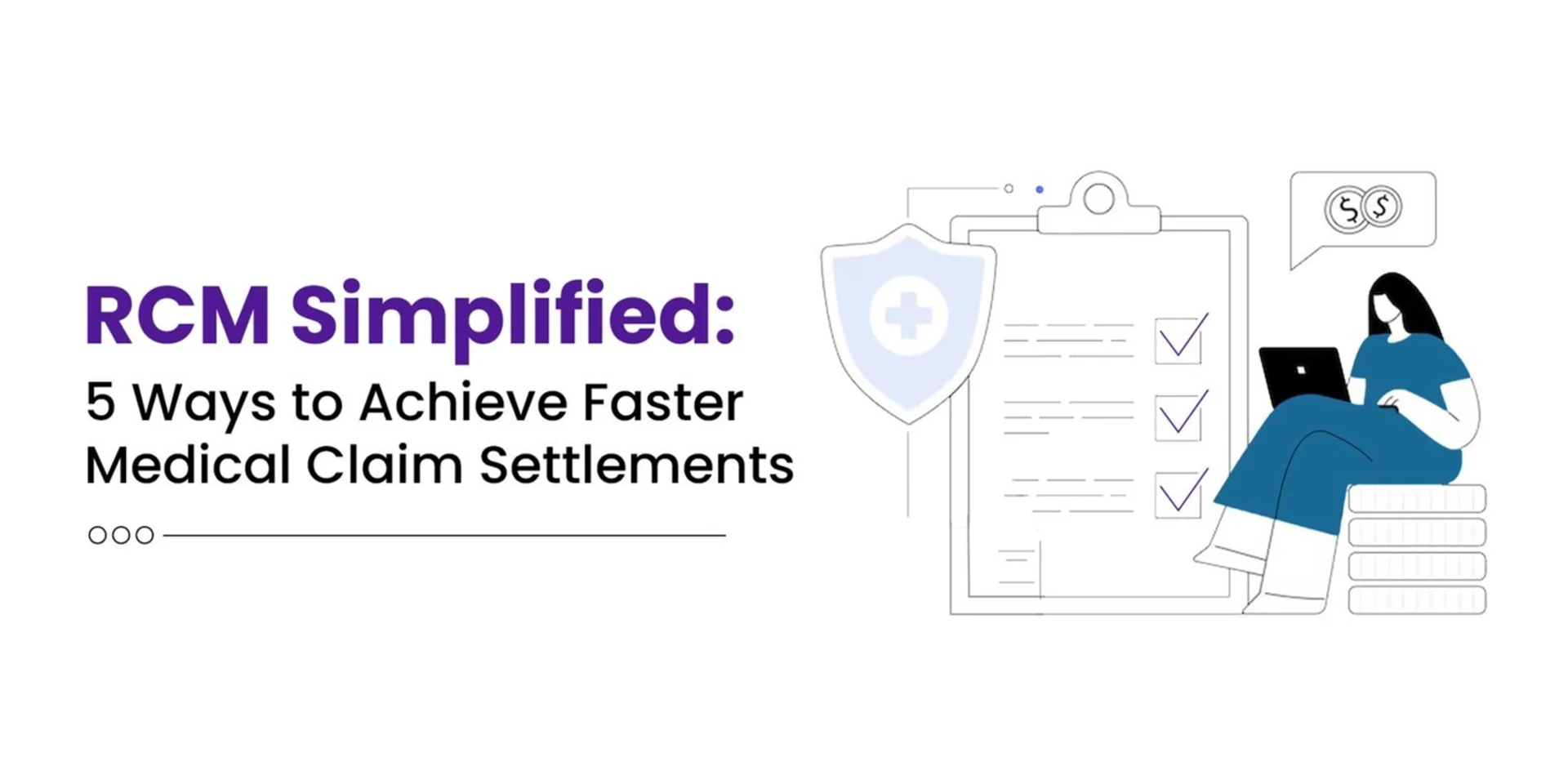Reasons and Impacts of Slower Medical Claim Settlements
Industry averages reveal that almost 20 percent of all claims are denied, rejected or underpaid. And in addition to the cost of rework claims-not to mention even higher appeal costs-as many as 60 percent of returned claims are never resubmitted.
Understanding why these denials occur is important, so that the healthcare organizations can not just optimize their revenue cycle management (RCM) but also enhance financial outcomes.
Some of the top reasons are as follows:
- Incomplete or inaccurate patient information
- Coding and documentation errors
- Delays in claims submission
- Complexity in insurance verification processes
- Multiple payer policies and requirements.
All these further impacts your healthcare organization in the following ways:
- Cash flow disruption and financial instability
- Administrative burden on staff
- Increased operating expenses due to resubmission
- Delayed patient care and decreased satisfaction
Looking at the severity of this issue, we have come up with five strategies to help you address the most common challenges in medical billing claims to ensure a seamless and faster process.
5 Ways to Achieve Faster Medical Claim Settlements
Here’s how you can ensure faster medical claim processing and settlements:
Maintaining Accurate Patient Data
As we have already mentioned earlier, data errors have become one of the primary causes that give rise to billing claim delays or denials.
Say, for instance, the name of a treatment facility on file does not match the name in the insurance company’s records. Also, sometimes patients change some of their information at the time of treatment or immediately after. All these cases result in slower medical claim settlement.
Updating data such as address, names, and health information, when necessary, will keep the process of claims processing fast and efficient. Also, healthcare providers must also reach out to their third-party vendors, if any, and communicate to them any patient changes they make at their end.
Clean your data often to catch errors, missing detail, and duplicate data so that your data will be as accurate as possible. Automation also facilitates accurate data management since it optimizes nearly every step in a patient’s journey.
Relying on Automation
Artificial intelligence (AI) and automation are accelerating the claims settlement and minimizing errors to a greater extent.
It is no news that most of the claim processing involves data entry and several repetitive, time-consuming tasks done manually. However, it takes up a lot of time, and when done manually, there is a high potential for errors.
When you switch to automation, your staff will have more time to focus on patient care and other core business activities. You are also likely to process the claims a bit faster because automated and AI-based systems automatically not just fill out information but also scan for potential errors along the way.
Incorporating Electronic Claims Processing
Even today, a good number of healthcare providers use paper claims and invoices more than electronic processing; however, these traditional tools often lead to slower medical claim settlements.
Switching from paper invoices and forms to electronic claims processing can allow healthcare organizations to transmit claims instantly to the parties concerned. This certainly means that patients will receive their bills sooner and conveniently make online payments to close the claims process.
Reviewing & Monitoring Claims Thoroughly
According to a source, 80% of medical bills contain errors. Manual reviews sometimes aren’t enough to catch all the potential mistakes that cause delays or denials.
Many medical companies do automated claim scrubbing to scan for errors to ensure that claims process seamlessly. Spending that extra time to double-verify errors will save a large chunk of time for healthcare organizations because they may not have to deal with many denied or delayed claims.
Additionally, claim processes also should not be a series of siloed functions. If you separate each step, you will never understand where the claim is and what is causing the delay. Tracking claims through the whole process will enable healthcare providers to find those areas that need to be streamlined or factors leading to errors.
Training Staff
Medical billing claims change every now and then. Every insurance company has their own requirements, and the governments are coming up with laws to simplify medical billing for providers. In such a scenario, training your staff is vital to helping them stay ahead of the curve. Regular training will keep them updated to process medical claims correctly. Plus, it will also help them update handbooks and resources with new laws and regulations to keep both errors and miscommunication at bay.
Learn how Pain Management Group Revenue Leaps by 30% with Streamlined Claims Filing.
Bottom Line
By implementing these five strategic approaches to medical claim settlements, healthcare organizations can revolutionize their revenue cycle management. The journey to optimization doesn’t end here—it’s an ongoing process of refinement and adaptation to evolving healthcare regulations and technologies.
Remember, the key to success lies in viewing RCM not as a burden, but as an opportunity for growth and improved patient care. By streamlining your claims process, you’re not just enhancing your bottom line; you’re also freeing up valuable resources that can be redirected toward what truly matters: providing exceptional healthcare services.
As the healthcare landscape continues to evolve, staying abreast in RCM practices will be crucial. Consider partnering with RCM solutions providers who can guide you through implementing these strategies effectively. The investment in optimizing your claims settlement process today will yield significant returns in efficiency, patient satisfaction, and financial stability tomorrow.
Take the first step toward transformation—your patients and your practice will thank you for it.







